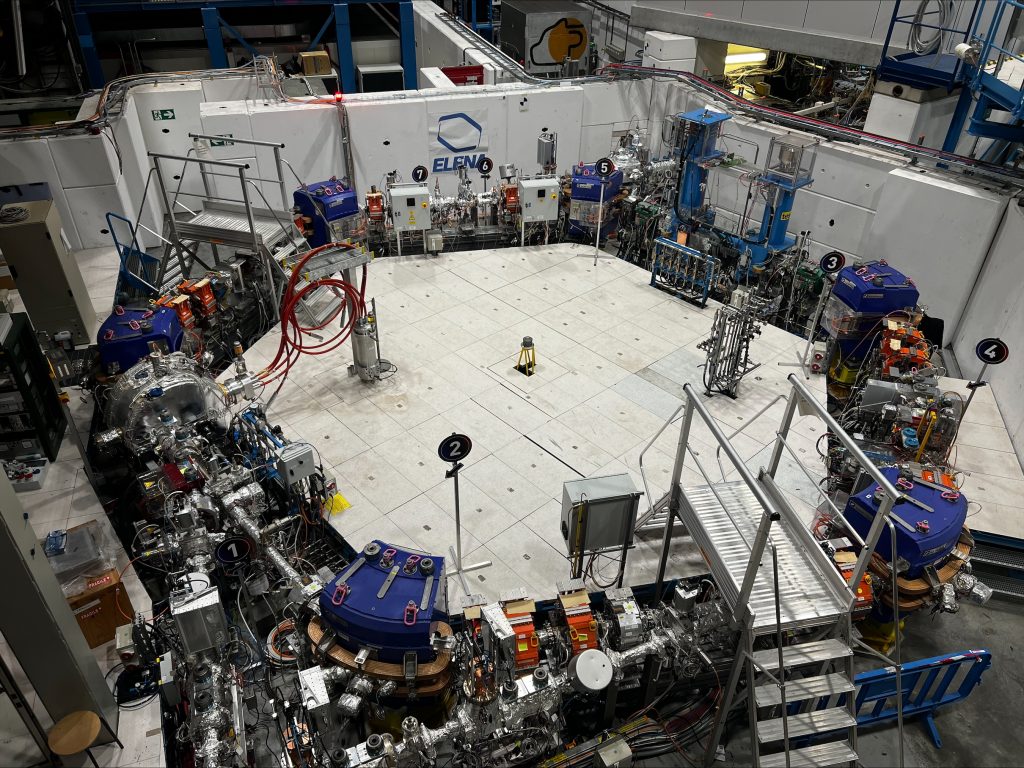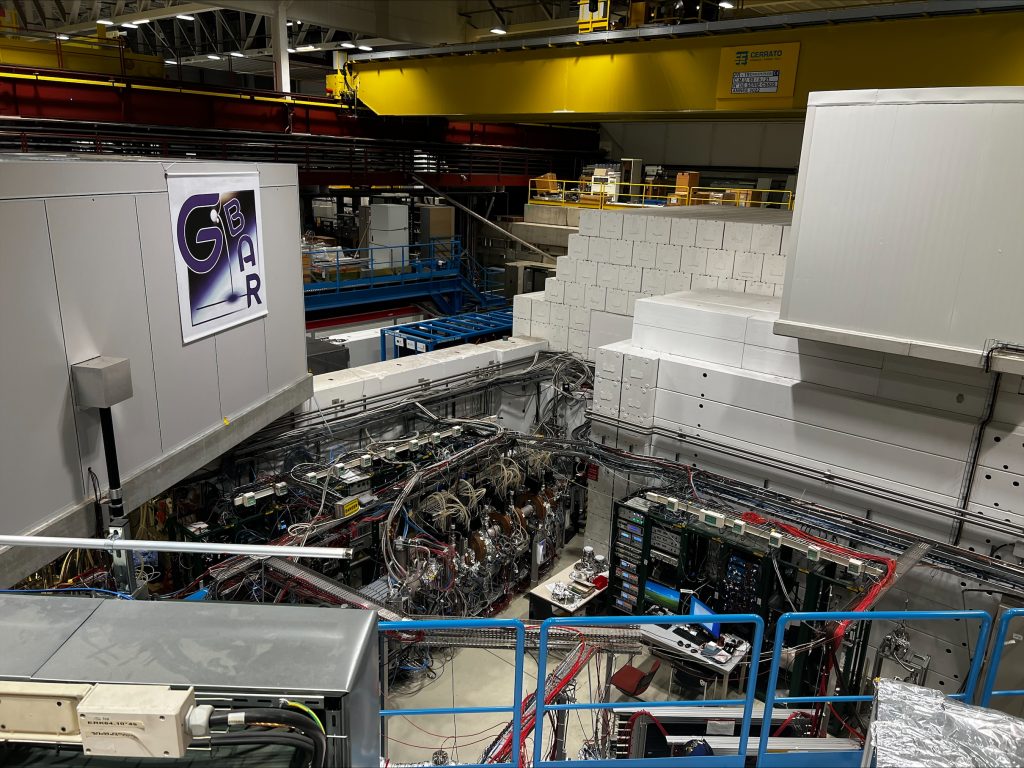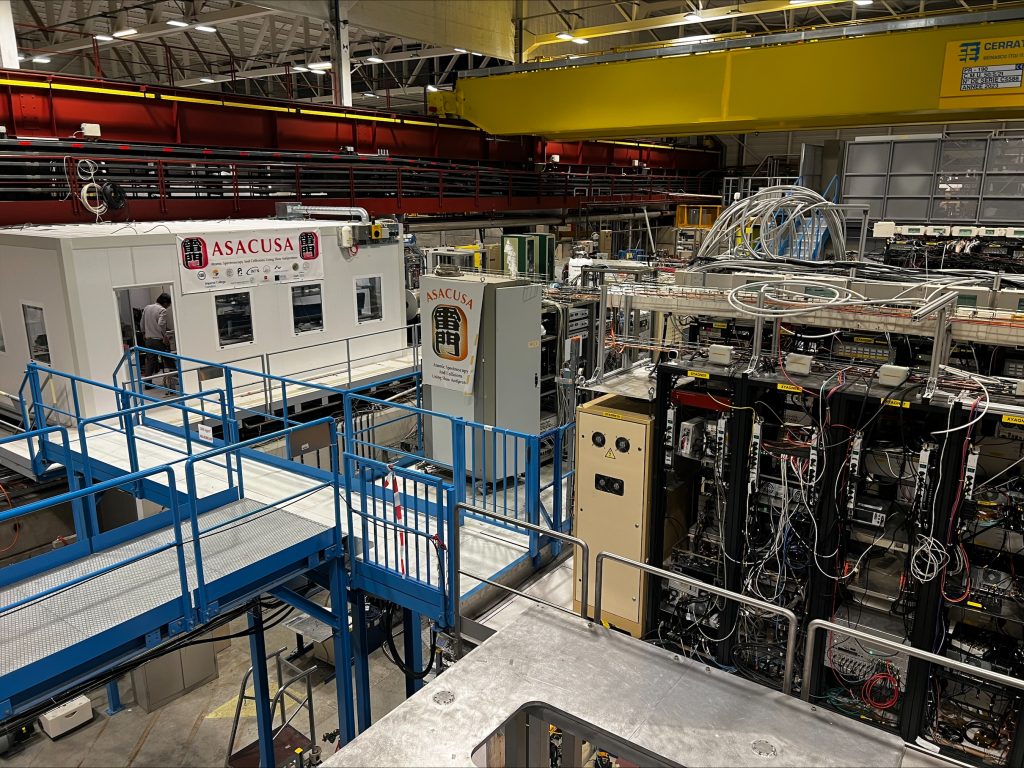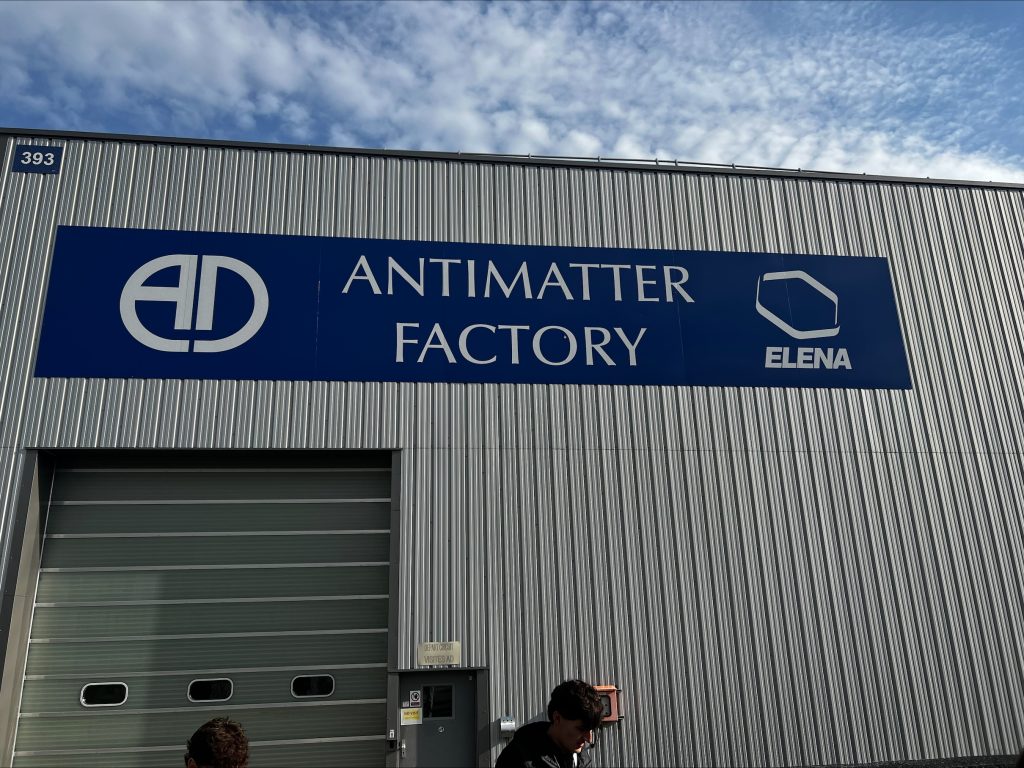We had the opportunity to tour various parts of the European Organization for Nuclear Research (CERN) today, learning about the groundbreaking research conducted here. This facility is known worldwide as the largest particle accelerator (Large Hadron Collider), and for the discovery of the Higgs Boson, the isolation of antimatter, and the birth of the world wide web. On the tour, we saw the first experiment at CERN, the “antimatter factory”, and the data center.
The first stop on the tour was the first experiment conducted at CERN, which was centered on particle rotation and speed. The exact methods/objectives/outcomes of this experiment were a little difficult to discern from the tour, but I will try my best to explain what was happening. In the picture, the large metal cylinder (near the top) contains copper coils to induce a magnetic field. A similar one is located below, but can’t be seen in the picture. These, in combination with horizontal “D” shaped coils that quickly alternate direction of induced magnetic field, cause particles to speed up and circle around the chamber. The particle could then be extracted for further analysis using the device on the left of the picture.

The next stop on the tour was the antimatter factory. A number of experiments were based in this building, all revolving around understanding the properties of antimatter. All tests began with the formation of antimatter from normal matter. This is a rather involved process, since antimatter will annihilate within nanoseconds after formed when in the presence of normal matter. CERN, by completing formation processes in a vaccum, is currently able to keep antimatter stable for around 60 mins (one of their most notable accomplishments). The formation process begins with a proton exiting the accelerator and getting fired into an iridium target. Once the particle hits the target, protons and antiprotons are generated. Protons are filtered out by magnetic fields, and the antiprotons move on to the deceleration process called ELENA. The extra low energy antiproton ring (ELENA) using techniques such as quadrupoles to decelerate particles, shown in the photo.

There are three main experiments currently running using antimatter: GBAR, ASACUSE, and Alpha-g. The Gravitational Behavior of Antihydrogen at Rest (GBAR) experiment seeks to understand how antihydrogen atoms fall in response to gravity. The first step in this experiment is to create the antihydrogen, consisting of one antiproton and antielectron (positron). The antiproton from ELENA interacts with the positrons generated for the experiment. These interactions result in antihydrogen, charged antihydrogen, and excess positrons. These species are filtered by magnetic fields, isolating the charged antihydrogen (which contains an extra positron) for analysis. Once entering the free fall chamber, a laser removes the excess positron and the antihydrogen goes into free fall. This movement is then recorded for analysis.
The atomic spectroscopy experiment and collisions using slow antiprotons (ASACUSA) seeks to determine the mass of the antiproton for comparison to a normal proton. To accomplish this, researchers make antiprotonic helium by replacing one of the electrons with an antiproton (which has a negative charge). Lasers are then used to excite the antiproton, moving it from the ground state to an excited state. When the antiproton returns to ground state, energy is released in the form of light. The exact amount of energy released is recorded, and can be related to the mass through a series of equations.
The alpha-g experiment also seeks to understand the effect of gravity on antihydrogen particles, but accomplishes this in a different way. Stable antihydrogens are enclosed in a vertical atom trap. Both ends are opened and the direction (up or down) of particle movement is recorded. This information also helps to determine the gravitational behavior, g, for antimatter. From these experiments, they found that around 80% of the antihydrodens went down, similar to previous understanding about normal hydrogen.



The last stop of the tour was the data center. We learned about the evolution of data storage at CERN, from expensive (> $100,000 CHF!) 10GB disks to ~$150 CHF 2TB drives. We also got to hear a little bit about cooling and electricity practices. The guide mentioned that they buy most of their power from France, sourced in part from nuclear power plants.
That largely concluded the tour, which was a great opportunity to learn about scientific advances at CERN (and more generally, the field of particle physics). After lunch, a couple of us stopped by a museum-of-sorts at CERN to learn about the accelerator itself.